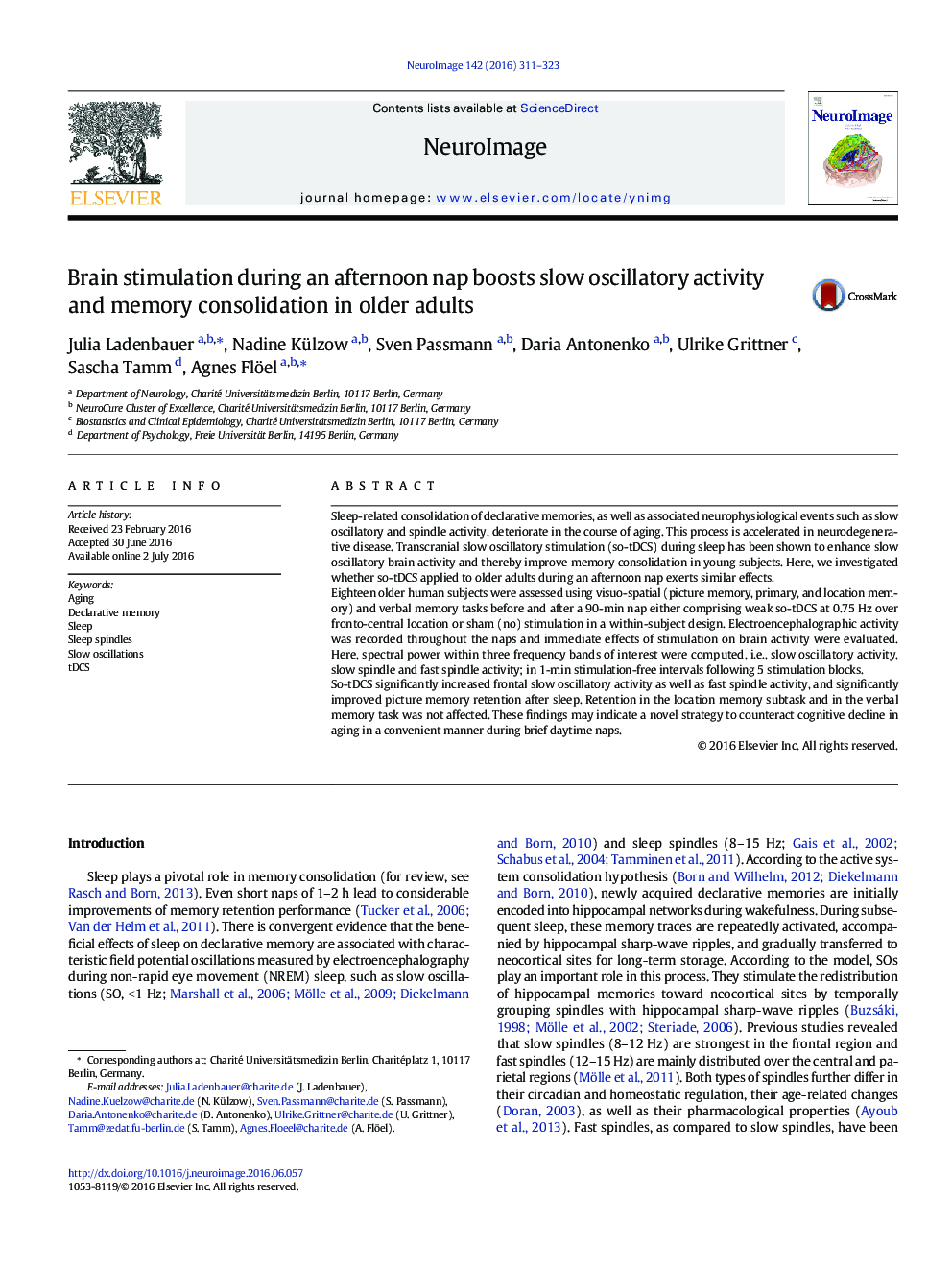| Article ID | Journal | Published Year | Pages | File Type |
|---|---|---|---|---|
| 5631440 | NeuroImage | 2016 | 13 Pages |
â¢Improved picture memory performance by brain stimulation during nap in older adults.â¢Stimulation enhanced memory-relevant slow oscillations and fast spindle activity.â¢Findings may indicate novel strategy to counteract cognitive decline in aging.
Sleep-related consolidation of declarative memories, as well as associated neurophysiological events such as slow oscillatory and spindle activity, deteriorate in the course of aging. This process is accelerated in neurodegenerative disease. Transcranial slow oscillatory stimulation (so-tDCS) during sleep has been shown to enhance slow oscillatory brain activity and thereby improve memory consolidation in young subjects. Here, we investigated whether so-tDCS applied to older adults during an afternoon nap exerts similar effects.Eighteen older human subjects were assessed using visuo-spatial (picture memory, primary, and location memory) and verbal memory tasks before and after a 90-min nap either comprising weak so-tDCS at 0.75Â Hz over fronto-central location or sham (no) stimulation in a within-subject design. Electroencephalographic activity was recorded throughout the naps and immediate effects of stimulation on brain activity were evaluated. Here, spectral power within three frequency bands of interest were computed, i.e., slow oscillatory activity, slow spindle and fast spindle activity; in 1-min stimulation-free intervals following 5 stimulation blocks.So-tDCS significantly increased frontal slow oscillatory activity as well as fast spindle activity, and significantly improved picture memory retention after sleep. Retention in the location memory subtask and in the verbal memory task was not affected. These findings may indicate a novel strategy to counteract cognitive decline in aging in a convenient manner during brief daytime naps.
